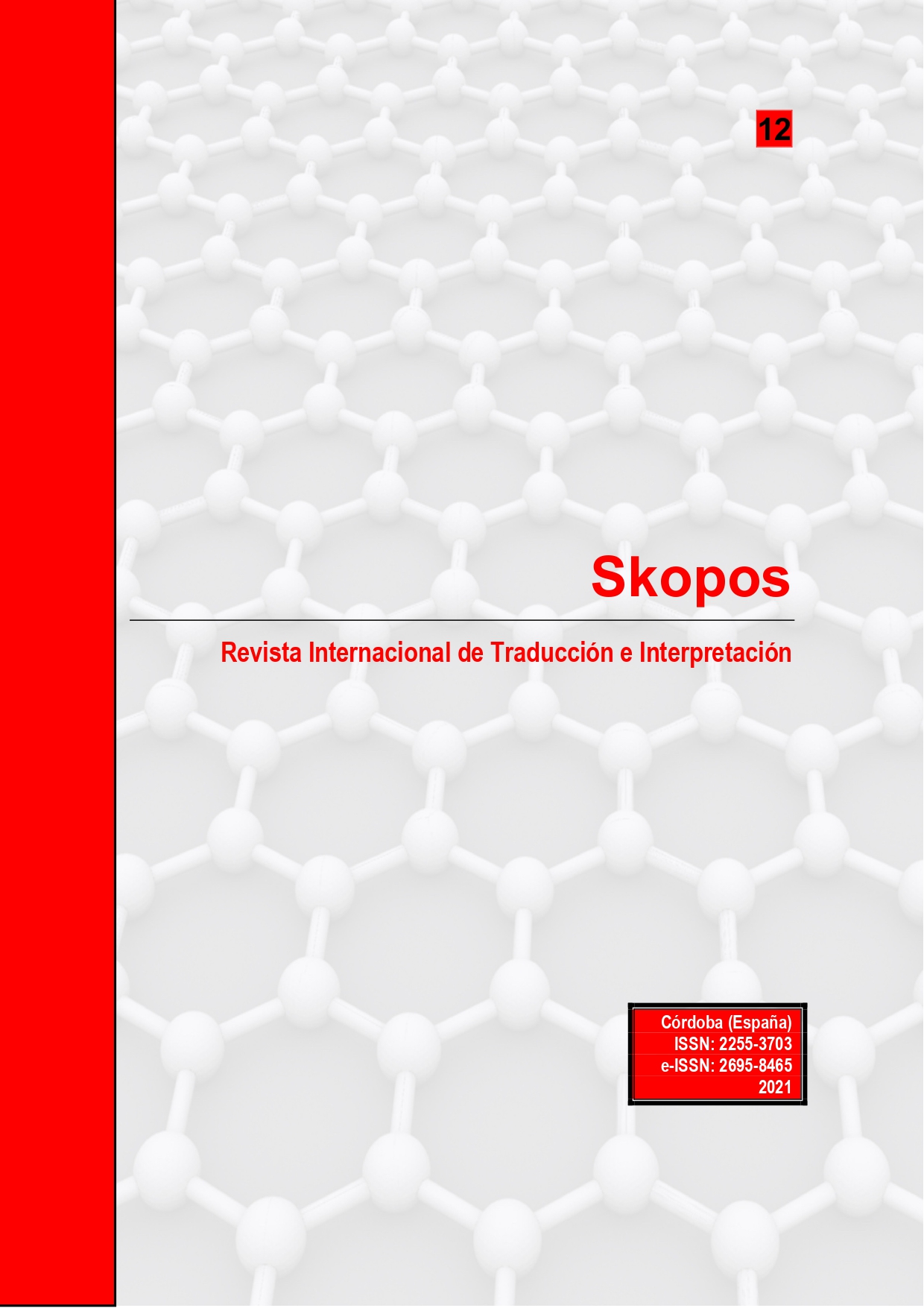Do similar contexts of production entail similar textual features? A corpus-based comparison of the simplification-related features in translation and Academic Writing
DOI:
https://doi.org/10.21071/skopos.v12i.13653Abstract
This paper explores the relationship between the context of production of texts and their specific features. With this aim, the study compares the features related to syntactic and stylistic simplification between two textual practices: translation and Academic Writing. Actually, both practices are produced in common contexts with similar purposes. Further, the exam of simplification-related features in different sets of texts translated into English from different languages also allow for further verifying the translation universals hypothesis of simplification. For the analysis, an archive of four comparable corpora of English texts is compiled, representing original and translated versions of academic and non-academic texts, respectively. Once determined concrete indicators of simplification (lexical variety, lexical density, mean sentence length, presence of subordination and of non-finite sentences), a corpus-based methodology is used to identify each one of them in each set of texts, according to the hypothesis that both practices present the same simplification-related features at the same extent. The comparison of the results refutes both hypotheses, showing that each practice presents different simplification-related features and, in all the analyzed corpora, originals result to be simpler than translations. Moreover, the distribution of the examined indicators across the four corpora seems to follow a regular pattern suggesting an interesting point of departure for further studies.
Downloads
##submission.downloads##
Pubblicato
Come citare
Fascicolo
Sezione
Licenza
Política propuesta para revistas que ofrecen acceso abierto. Aquellos autores/as que tengan publicaciones con esta revista, aceptan los términos siguientes:
- Los autores/as conservarán sus derechos de autor y garantizarán a la revista el derecho de primera publicación de su obra, el cuál estará simultáneamente sujeto a la Licencia de reconocimiento de Creative Commons que permite a terceros compartir la obra siempre que se indique su autor y su primera publicación esta revista.
- Los autores/as podrán adoptar otros acuerdos de licencia no exclusiva de distribución de la versión de la obra publicada (p. ej.: depositarla en un archivo telemático institucional o publicarla en un volumen monográfico) siempre que se indique la publicación inicial en esta revista.
- Se permite y recomienda a los autores/as difundir su obra a través de Internet (p. ej.: en archivos telemáticos institucionales o en su página web) antes y durante el proceso de envío, lo cual puede producir intercambios interesantes y aumentar las citas de la obra publicada. (Véase El efecto del acceso abierto).






